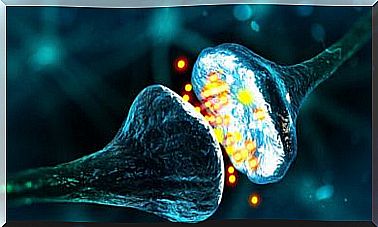Holotropic Breathing, A Wellness Alternative

Holotropic breathing is an experiential psychotherapy technique. The latter is an approach in which the intervention is made on basically mentally healthy people and involves exposing them to an experience in which they can better understand who they are and what position they adopt in real situations.
It should be noted that experiential psychotherapy has its roots in the so-called transpersonal psychology, which, in turn, is a current of humanistic psychology, born in the 60s. As for holotropic breathing, specifically, it is a technique created by Czech psychiatrist Stanislav Grof.
The central goal of holotropic breathing is to achieve an expanded state of consciousness. This is an experience similar to that which can occur through the consumption of some psychotropics, such as those used by shamans or certain spiritual guides. The difference is that in this case everything is achieved through breathing and has therapeutic purposes.

What is holotropic respiration?
Holotropic breathing is a technique that consists of causing controlled hyperventilation, in order to generate a different and, theoretically, expanded state of consciousness. The purpose is to increase self-knowledge and promote psychotherapeutic effects. The word holotropic comes from the Greek root holos , which means ‘totality’ and from trepein , which means ‘to go towards’. So etymologically it means ‘to go towards the whole’.
Hyperventilation is faster and deeper breathing than normal. In a common breath, oxygen is inhaled and carbon dioxide or CO2 is exhaled. The rapid and intense breathing that occurs in hyperventilation causes the volume of oxygen to increase and the volume of carbon dioxide to decrease. Under normal conditions this causes discomfort such as anxiety, numbness, fainting, etc.
In holotropic respiration, hyperventilation is induced and regulated. In general, this technique can only be carried out under controlled conditions and, usually, in a group. Otherwise, it could cause undesirable effects like panic attacks. The method is not recommended for those with hypertension, respiratory, neurological or mental health problems.
The technique
Typically, basic training is initially done to explain the technique, describe what can be expected of it, and indicate the precautions that should be taken into account for practice. Holotropic breathing sessions are usually lengthy, generally no less than four hours.
The practice should be carried out in a comfortable and quiet place. It begins when the “respirator” enters that space, almost always without shoes, and lies down on a mat. Then relaxing music is played, usually Tibetan, Chinese or Hindu. Music can never be interrupted during the session. Once everyone is comfortable, begin with gentle breathing.
With the eyes closed, or covered with masks, the practice of hyperventilation begins. You should breathe quickly and not stop during the hours that follow. There is a person who leads the practice and sometimes the participants take turns to act as “breathers” or “caregivers”, consecutively.
Once the breathing session itself is finished, each one must paint a mandala, or, in any case, make a symbolic drawing that reflects what they feel at that moment. At the end there is a meeting of the whole group and individual experiences are shared.

The benefits of holotropic respiration
What is expected from holotropic breathing sessions is that after hyperventilating for a time, a new state of consciousness begins to emerge. The basic approach indicates that this type of technique allows penetrating the deepest layers of the psyche and that when this happens, unconscious contents of great value for each person begin to emerge.
Typically, forgotten or repressed episodes come to the fore. People, situations, emotions, or perceptions come to mind. All of these are considered very important content for each person; they emerge precisely because they are aspects that have been blocked and only resurface with a technique of expanding consciousness.
Science has indicated that holotropic breathing is a technique that offers benefits, mainly in terms of relaxation and emotional balance. However, there is no evidence that it produces an altered state of consciousness or that it allows the unconscious to be fully explored. Those who practice it, on the other hand, assure that it is possible.









